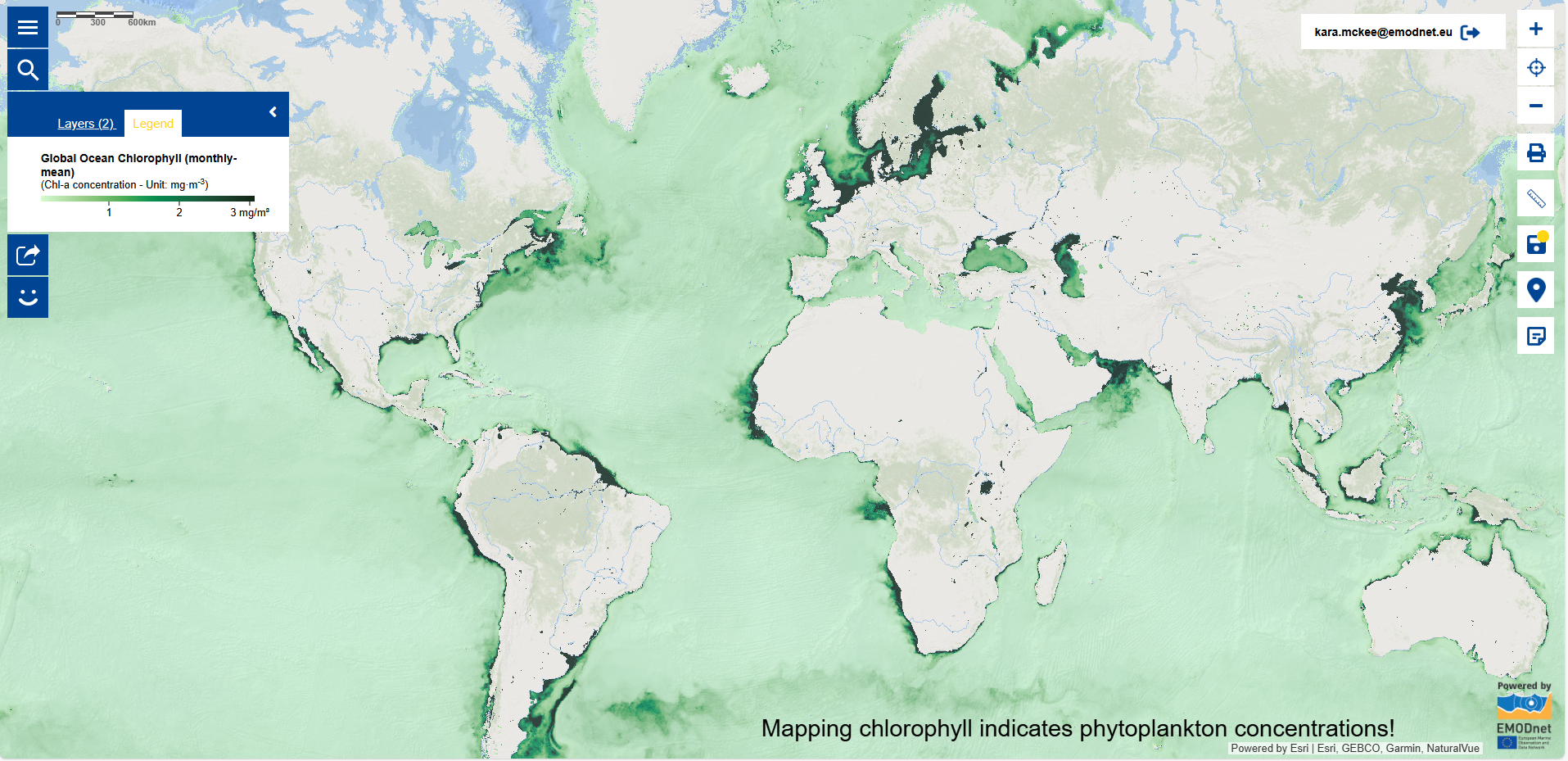EMODnet’s eutrophication and ocean acidification offer is now available on ERDDAP
EMODnet brings its latest services to EGU 2025
Map of the Week – Plastic Litter: Easter eggs, chocolate, and pollution
Map of the Week – Emissions of the Shipping Industry – Cargo Vessel Density
Map of the Week: Springtime Surge - Phytoplankton Blooms - Global Ocean Chlorophyll

Spring has sprung, and blooming isn’t just for flowers. This time of the year, coastal areas are experiencing a bloom in algae production.
New EMODnet Biology product: Evolution of zooplankton biodiversity patterns in the Baltic Sea region
Map of the Week: Sea Birds and their Conservation - Mapping Abundance and Protecting Habitats
EMODnet Biology publishes new data products analyzing the evolution of the Community Temperature Index (CTI) of intertidal macroalgae in NW Spain.
Ocean warming is changing marine species distributions and modifying the structure of coastal communities.In the Southern part of the Bay of Biscay, climate change is affecting canopy-forming macroalgal assemblages which are turning from complex systems holding a wide range of fauna and flora to simpler systems dominated by turf-forming species with warmer affinities. This transition has negative effects on biodiversity, but also in the ecosystem services provided by those organisms with further consequences in associated sectors such us fisheries or tourism.
EMODnet Biology’s new product: Biomass-Weighted Fish Functional Feeding Traits for the Northeast Atlantic
The combination of the below information reveals the spatial and temporal changes in marine ecosystem structure and functioning across the Northeast Atlantic shelf seas.
